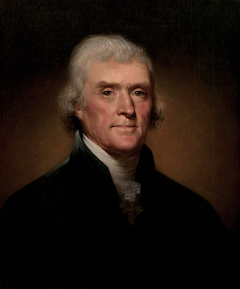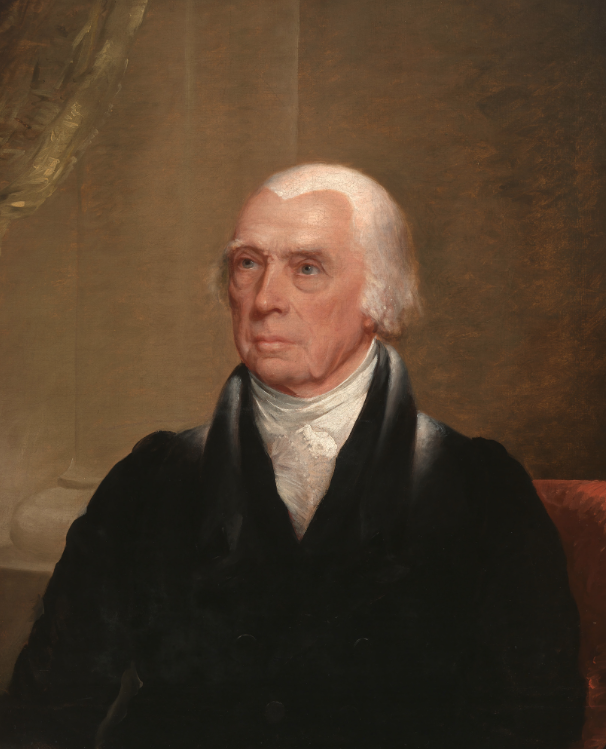Jeffersonian Project: Thomas Jefferson
Daniel Goodman
M/J United States History
Ms. Kooiker
6/13/23
Jeffersonian
Project: Thomas Jefferson
Thomas Jefferson is one of the three Jeffersonian presidents
and is additionally the first to be elected (“Thomas Jefferson, a Brief Biography”).
He was born on April 13th, 1743, in Albemarle County, Virginia, to
his parents Jane Randolph and Peter Jefferson (“Thomas Jefferson, a Brief
Biography”; “Thomas Jefferson | The White House”). Despite his remarkable adulthood,
however, his early life was nothing particularly special. He started to study
at the College of William and Mary at the age of seventeen, in which afterwards
he read the law after he finished his study (“Thomas Jefferson, a Brief
Biography”).
Jefferson’s role in politics would start when he was in
his mid-twenties, when he was elected to Virginia’s House of Burgesses (“Thomas
Jefferson, a Brief Biography”). From there, he would climb the ranks until he was
a presidential candidate in 1796. (“Thomas Jefferson, a Brief Biography”;
“Thomas Jefferson | The White House”). Ultimately, he would attain presidency
in 1800, where he would then serve for two terms (“Thomas Jefferson | The White
House”). Afterwards, he would retire for the last seventeen years of his life,
where he would generally stay at Monticello (“Thomas Jefferson, a Brief
Biography”). Thomas Jefferson died on July 4th, 1826 (“Thomas
Jefferson | The White House”).
As aforementioned, Jefferson’s presidency was remarkable,
and can be proven with the accomplishments he made during it. In fact,
Jefferson himself even wanted three of his achievements to be put on his
tombstone (“Thomas Jefferson, a Brief Biography”). The first of these
accomplishments is that he authored the Declaration of Independence (“Thomas
Jefferson | The White House”). The Declaration of Independence was practically
America declaring themselves as their own nation, and with this came the
separation of America from Great Britain (“Milestones: 1776-1783”). Further, he
drafted it while he was only thirty-three years old, but despite this, it remains
to be one of his crowning accomplishments during his life (“Thomas Jefferson |
The White House”).
Jefferson’s second remarkable accomplishment was that he authored
a bill that established freedom of religion (“Thomas Jefferson, a Brief
Biography”; “Thomas Jefferson | The White House”). The bill is known as the
Statute for Religious Freedom, and the quest for its passage started in 1776
(“Thomas Jefferson, a Brief Biography”). Jefferson had just come back to Virginia
and decided to be in its legislature, and he ultimately worked together with
James Madison to try and pass the statute (“Thomas Jefferson, a Brief
Biography”; “Thomas Jefferson | The White House”). Ultimately, the statute
would be passed in 1786 as a collaborative effort between Madison and Jefferson
(“Thomas Jefferson, a Brief Biography”).
Jefferson’s third groundbreaking achievement was that he
founded the University of Virginia, which is still thriving to this day (“Thomas
Jefferson, a Brief Biography”). It was founded by him in 1819, and it was made
for one sole purpose in mind (“About the University”). Jefferson had the primary
goal of expanding the knowledge known by humans, but he also wanted to develop
an educated nation as well (“About the University”; “Thomas Jefferson, a Brief
Biography”). Despite not being as monumental as his other accomplishments, the
university still holds up well in present times.
The impact that Jefferson left on American democracy,
however, is something that cannot be understated. For example, the Declaration
of Independence established various key values and beliefs within American
government (“Part I: The Declaration of Independence”). Specifically, the
compact theory was preserved as a core idea of due to it, alongside other ideas
(“Thomas Jefferson, a Brief Biography”; “Part I: The Declaration of
Independence”). Another idea that was solidified through the declaration was
that the government was meant to protect the rights of the people (“Part I: The
Declaration of Independence”).
In a sense, Jefferson shifted the tone of American
government, as there would now be more emphasis on the rights of the people due
to the Declaration of Independence (“Part I: The Declaration of Independence”;
“Thomas Jefferson, a Brief Biography”). In addition to writing the Declaration
of Independence, Jefferson also had a leading role in developing a federal
system of government (“Establishing a Federal Republic”). He did this through
his correspondence while he was the United States minister for France back in
1787 (“Establishing a Federal Republic”; “Thomas Jefferson, a Brief
Biography”). Throughout Jefferson’s multiple offices, he was always trying to establish
a federal government, and he was successful in doing so (“Establishing a
Federal Republic”).
In conclusion, Jefferson has had an outstanding impact on
American democracy through a variety of ways. For example, he added more focus
to the rights of the people in the democracy and helped develop a federal
government (“Establishing a Federal Republic”; “Part I: The Declaration of
Independence”). Overall, the change that Jefferson brought about to America can
still be felt to this day. Without him, the nation would not be nearly the same
as it is right now and could potentially be a lot worse.
Works Cited
“About the University.” The University
of Virginia, 2023, www.virginia.edu/aboutuva. Accessed 13 June 2023.
“Establishing a Federal Republic - Thomas
Jefferson | Exhibitions - Library of Congress.” Library of Congress,
2023, www.loc.gov/exhibits/jefferson/jefffed.html. Accessed 13 June 2023.
“Milestones: 1776–1783 - Office of the
Historian.” Office of the Historian, 2023,
history.state.gov/milestones/1776-1783/declaration. Accessed 13 June 2023.
“Part I: The Declaration of Independence.” Basic
Readings in U.S. Democracy, 2023, usa.usembassy.de/etexts/democrac/part1.htm.
Accessed 13 June 2023.
Peale, Rembrandt. “Thomas Jefferson.” The White House Historical Association, 1800, www.whitehousehistory.org/photos/thomas-jefferson. Accessed 13 June 2023.
“Thomas Jefferson, a Brief Biography.” Monticello,
2023, www.monticello.org/thomas-jefferson/brief-biography-of-jefferson.
Accessed 13 June 2023.
“Thomas Jefferson | The White House.” The
White House, 2023,
www.whitehouse.gov/about-the-white-house/presidents/thomas-jefferson. Accessed 13
June 2023.



Comments
Post a Comment